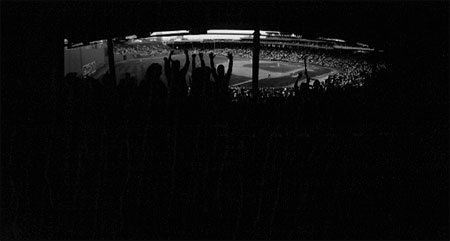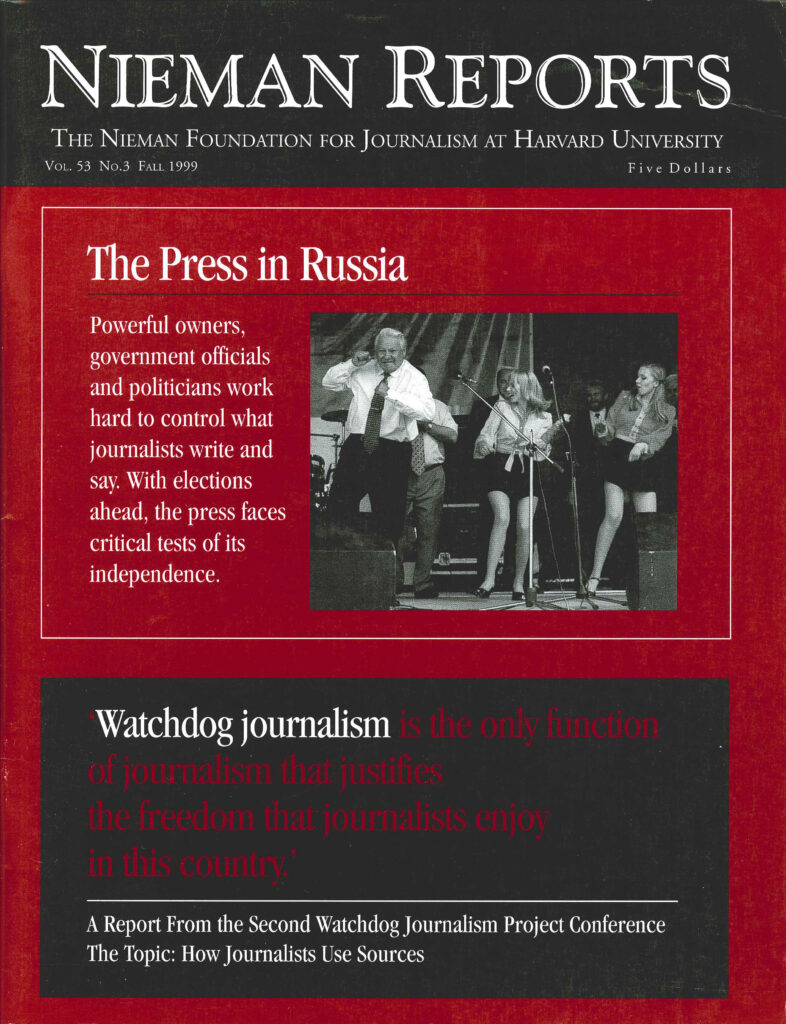
Photos by Stan Grossfeld from “Fenway—A Biography in Words and Pictures.”Fenway Park, the oldest ballpark in the major leagues, is bordered by five Boston streets, and one could make a case that the ball club thinks of its house as the Pentagon of Boston sports. Perhaps that is why those who own the team—the Red Sox—that plays inside its walls were so protective of it, to the point of taking away access we normally have as journalists.
“Fenway—A Biography in Words and Pictures” initially was conceived as an article for The Boston Globe’s Sunday Magazine. Under those conditions, the Red Sox granted considerable access so that with my camera I could record unique views. However, when the project became a book for Houghton Mifflin, Red Sox management decided that they were uncomfortable with an “unauthorized” biography of their home and asked the publisher not to publish the book. They argued that the commercial sale of images of the park belong to them. And they didn’t want any sentimental reminder of Fenway around at the time they announced plans for a new ballpark.
To its credit, Houghton Mifflin—a Fenway Park luxury box client of the Red Sox—went ahead with the project. This meant that I had to figure out ways to take photographs despite restrictions put on my ability to take pictures inside the park.
Upon publication, the Red Sox refused to allow any book interviews to take place inside the ballpark. Even if we couldn’t talk about the book at Fenway Park, the Sox management did. The Red Sox use an excerpt from our book in their official pamphlet to promote their proposal for a new ballpark to replace Fenway Park. Red Sox CEO John Harrington also quoted from the book when addressing the national media at an All Star press conference at Fenway Park. This event took place on the day his public relations staff told “CBS Morning News” that its reporters and cameras would not be allowed in Fenway for a book interview.
Although the Red Sox objected to a photograph of catcher Scott Hatteberg using the ancient urinal in the runway between the dugout and the clubhouse, and at least one star player wondered why he didn’t receive money for having his picture in the book, the Red Sox management purchased copies and gave them out as gifts.

Photographer Stan Grossfeld and sportswriter Dan Shaughnessy both work at The Boston Globe and are the authors of “Fenway—A Biography in Words and Pictures,” Houghton Mifflin, 1999. Grossfeld is a 1992 Nieman Fellow.



